What could be a more convincing prop than a real human skeleton? All around the world, there are attractions that have made use of real skulls, skeletons, and other human body parts – some without even realizing it! Here are five attractions containing real human remains you can visit.
Disneyland, California - Pirates of the Caribbean Ride

When Disneyland first opened it quickly became a favourite vacation destination for families worldwide. To keep up with the success, park Imagineers began expanding the offerings with new and thrilling rides. One of the most well-known and beloved rides is The Pirates of the Caribbean, whose boats were first ready for riders in 1967. Over the years, the ride has seen many updates, especially after the release of the Pirates of the Caribbean movie franchise.
Despite the changes, the ride still has an abundance of one thing in particular…skeletons. When the ride was first being constructed, many of the skeletons used to decorate the sets were reported to be real human remains donated by the University of California, because fake ones just didn’t look as good as the real deal. As the years went on the real skeletons were slowly replaced by better-looking fake ones built by the Imagineering team at Disney. The retired real ones were given proper burials.
Although the intention was to have all the real skeletons removed, there is talk around the park that one real human skull still remains within the Pirates of the Caribbean ride. As you sail around the ride’s river track, you will find yourself entering a bedroom scene known as “The Captain’s Quarters Treasure Room”. Resting upon the bed is the full-size “fake” skeleton of a lazy pirate, but it’s what’s hidden in plain sight right behind them that is of interest in this story. The headboard bears a strikingly real-looking skull and crossbones. That skull is in fact (confirmed by cast members) the last piece of a real human skeleton left in the ride. It has never been verified just who remains those are, but the most likely candidate is either a criminal whose body had been surrendered for scientific research, or other folks who donated their bodies to science. Does this open the door to the possibility of real ghosts being in the Haunted Mansion? We really hope so.

On this ride-through, watch for the scene with the real skull at 5:06!
London, England - London Dungeon
The widely popular immersive experience located in the heart of London is known for its unique take on sharing the city’s history. Guests who dare to enter the London Dungeon will find themselves traversing through some of the city’s more gruesome tales, like that of Victorian Plague Doctors, Witchcraft Trials, and even Jack the Ripper, all told through a mix of live actors, special effects and rides. Of course, these scenes are not without their fair share of props, including pieces of a skeleton lying within one of the attractions displays. Once thought to be nothing more than a fake prop, the skeleton in question has been on display since 1975, greeting guests who were none the wiser the whole time.
The partial skeleton has recently been proven to be real human remains by specialist Bill Edwards, despite having been on display in the Dungeon for decades. It’s not a full skeleton, what’s left is composed of a ribcage and fragments of a backbone, but it is 100% real. There are chances the skeleton could date back many centuries to the early days of anatomical research and most likely would have been smuggled into the UK from the far East in order to be dissected.

There are rumours that this isn’t the only real skeleton hidden amongst the Dungeon’s many scenes. There’s a second skeleton that hangs in a cage suspended near the attraction’s entrance that has also been suspected to be real. Since this gruesome discovery, the Dungeon has been faced with a difficult decision regarding their boney friends. Pay upwards of £2000 to acquire a license from the Tissues Authority to keep the skeletons on display legally, or have them permanently removed. There are currently no public updates revealing whether or not they paid the licensing fee and kept the skeletons, or if they were quietly removed. If you plan on visiting the London Dungeon, have a good look around and maybe you’ll spot these “props” for yourself.
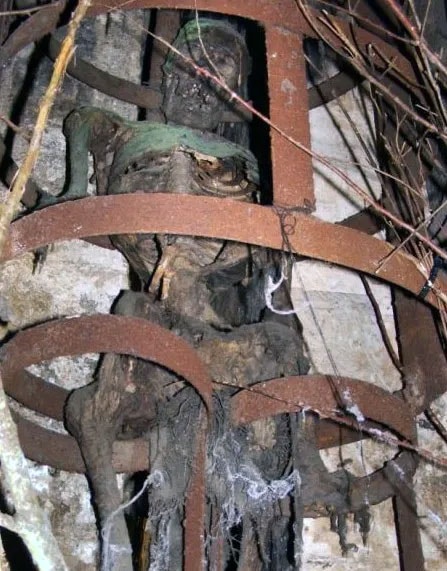
Pittsburgh, Pennsylvania - Carnegie Museum of Natural History
If you find yourself strolling through the exhibits within the Carnegie Museum of Natural History, you may end up passing right by a real human skull without even realizing it. A diorama showcasing a man riding on a camelback fighting off three Barbary lions stands behind one of the museum’s many gallery displays. It had been well known that the male figure did in fact have real human teeth sculpted into the mouth, but a recent discovery revealed that there were even more human remains lying underneath the wax skin.
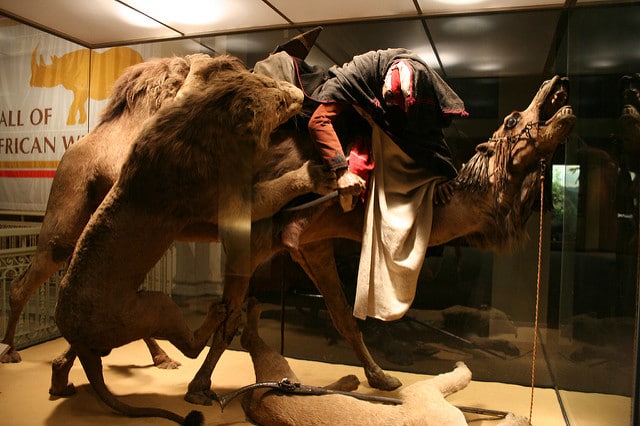
A local medical examiner’s office had been asked to help out with a few restoration projects around the museum. One of the tasks at hand was to have some of the exhibits go through a full CT scan, and the man on camelback was one of them. The scan revealed that it wasn’t just human teeth sculpted into the figure but the entire head had been sculpted around a real human skull.
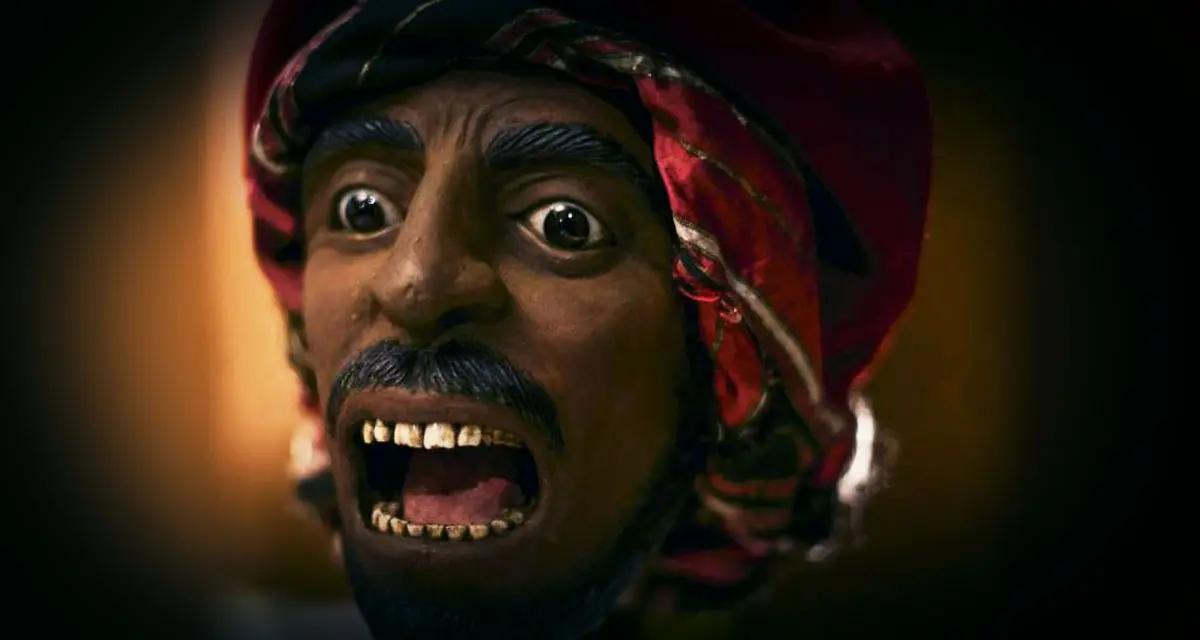
Although this discovery came as a bit of a surprise, it wasn’t that shocking to the museum staff. The exhibit had first been created during a time when it was widely acceptable to steal and display human parts, especially if they came from non-white people. It was an immoral practice, but unfortunately extremely common. As there is little information about the skull’s actual origins, there haven’t been any plans made to remove it. In order to educate people about the truth of where skulls and other body parts like this came from, the museum has planned a symposium to discuss the diorama’s historical and intellectual context. In any case, this one just might make you think twice about what’s really on displays in museums.
Ghost Tours & Paranormal Adventures
London, England - London’s Student Centre, University College
Walking through the brand new Student Centre at University College London, you would probably think nothing of a glass display case there. After all, it holds only an innocent wax figure of a long-dead 19th-century philosopher, right? Well, not quite. Although at first glance the figure sitting on display in the glass case appears to be just your average run-of-the-mill wax work, only the head atop the body is actually made from wax.
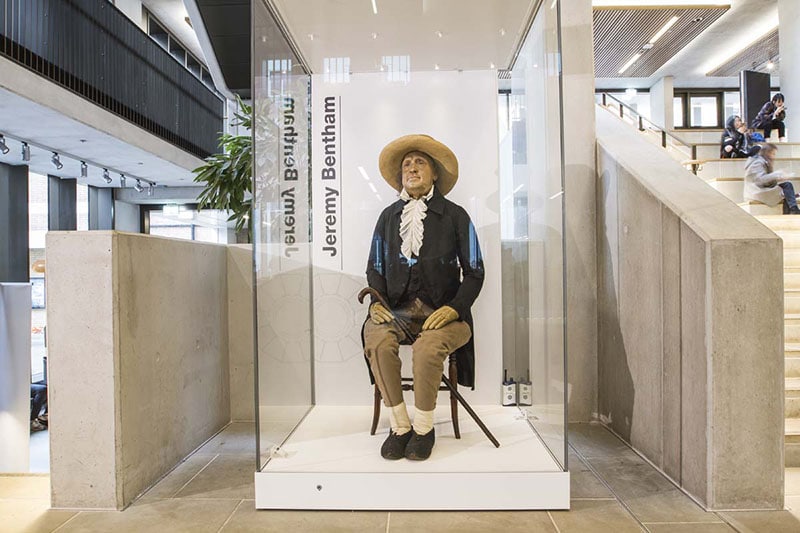
Jeremey Bentham was a widely regarded philosopher who passed away in 1832, leaving behind in his will a very strange request. Betham had asked for his body to be used for research. Once he was no longer of use to science, he wished for his head to be mummified and the remainder of his body to be preserved and put on display for all to see.
His body, now nothing more than a skeleton, was dressed in his own clothing and a wax head was made to replace what became of his now shrivelled and leathered head. He was propped up on a chair and occasionally, placed on the floor in between his feet was his real head resting on a platter. For anyone rushing past on their way to classes, it’s an easily missed detail. Especially since Bentham had been stowed in an old mahogany cabinet in a less-trafficked area of the school for 150 years before being given his new home at the Student Centre. Now he sits proudly, unfortunately without his real head, in his shiny new glass museum case where he can greet even more students every day. Would you say hi to Mr. Bentham if you passed by?
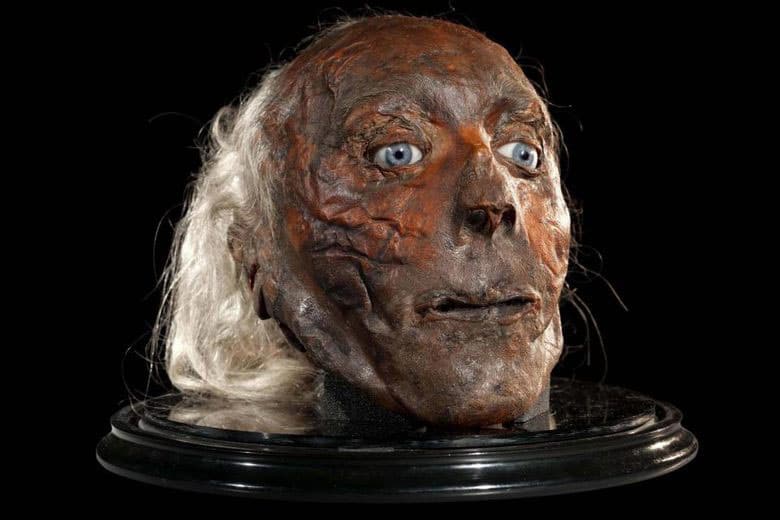
Long Beach, California - Laff in the Dark Fun House
In 1976, the crew working on the TV show “The Six Million Dollar Man” had been filming inside an old fun house. The artistic director was trying to stage an emaciated-looking dummy prop that had been spray-painted with glow-in-the-dark paint and given a hangman’s noose to wear around its neck. The dummy had been hanging in that exact spot for four years until the artistic director decided it would look good on camera. Unfortunately, as he was manipulating it, one of the arms crumpled off revealing layers of muscle and a core of human bone. It turns out the old prop was actually a real body and not made of wax at all.

Upon closer inspection of the body, clues as to who it could have possibly belonged to were hidden within its tightly closed mouth. Inside there was an old ticket. It was for admission into something called the “Museum of Crime”, and alongside the slip of paper was a single penny dating 1924.
Further research revealed this to be the body of Wild West gunslinger turned outlaw, Elmer McCurdy who met his fate in an hour-long shootout. McCurdy’s body had quite the adventure before landing in the old Fun House on Long Beach. He had been displayed as “The Bandit Who Wouldn’t Give Up” and those with a morbid curiosity could pay 5 five cents to see his body propped up in his coffin. Over the years, McCurdy could be seen on display in a variety of Carnivals and Sideshows, his body becoming more and more damaged as he travelled. Eventually, as he became unrecognizable as anything other than an old wax dummy, McCurdy ended up hanging in the old Fun House where he soon faded from memory until the day he was found by the film crew. My guess is that no one riding “Laff in the Dark” had anything to be laughing about on that day.
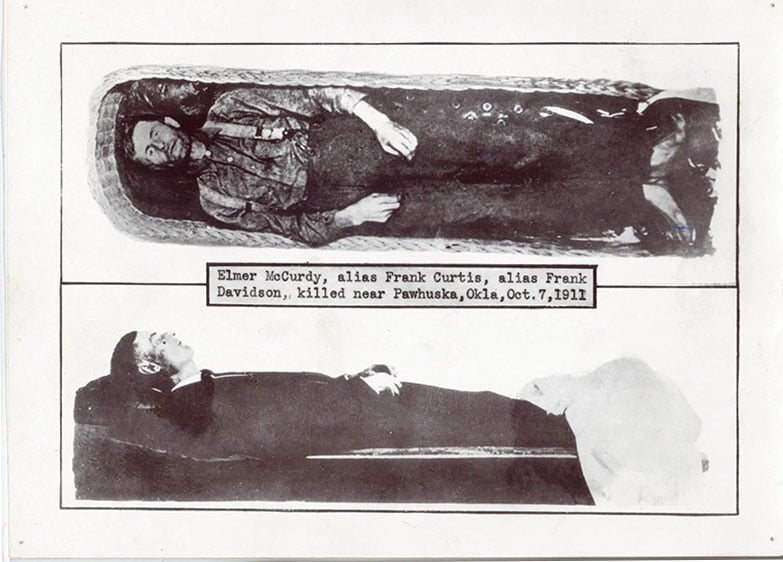
Written and Researched by
Richelle Gallant
Haunted Walk Tour Guide & Spooky Content Creator
Sources:
https://insidethemagic.net/2021/05/real-skull-pirates-of-the-caribbean-lp1/
https://www.bbc.com/news/uk-england-london-16037506
https://www.atlasobscura.com/articles/found-a-real-human-skull-in-a-museum-diorama
